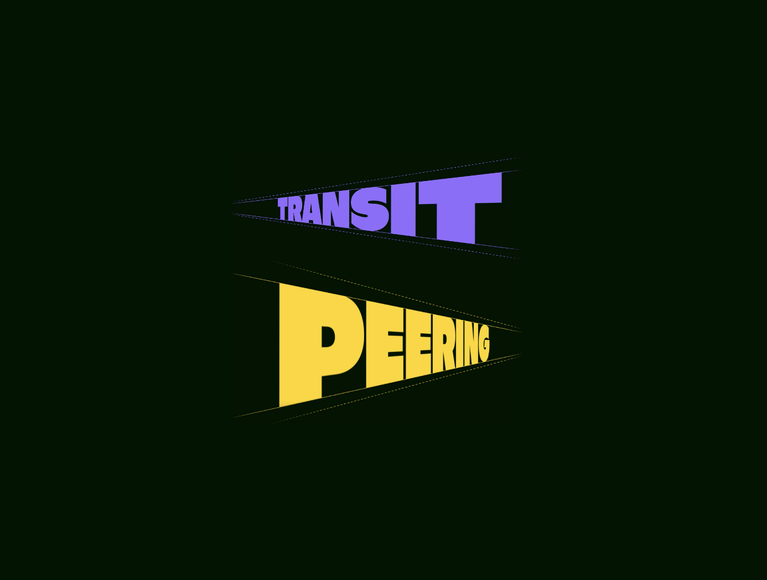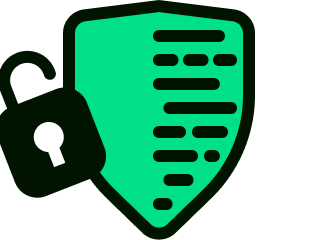

NL-ix Transit
Effortless optimal Transit
Ready for NL-ix Transit?
For an increasing number of organisations, the Internet is the lifeline that ties everything together. Good quality Internet has become a primary requirement to make the organisation run, and yet, this dependency on the Internet has also proven to be fragile.
Organisations with typically less then 10Gbps traffic tend to be stuck in the middle in terms of further improving the quality of their Internet. NL-ix Transit however might just be the solution you are looking for!
Transit with the quality of Peering
NL-ix Transit increases the quality of connectivity, whilst providing full insight into all your Internet traffic.
Effortless optimal Routing
NL-ix Transit is a product that combines Peering and Transit on just one single port and joins the routes of multiple services together into a single routing table for the customer, resulting in optimal routes. Interested in finding out how that works?
The words I use to describe our NL-ix Transit service are ‘effortless optimal routing’.
Vincent Bourgonjen - Network Engineer @ NL-ix
ICON, the Interconnect CONsole
One of the most distinctive features of NL-ix Transit is that actual traffic routes of your traffic are visible through our innovative ICON portal: an intuitive web interface that offers complete control and insight into (historical) internet traffic. It provides a detailed overview of latency, bandwidth and routes, which allows you to trace problems that lie outside the traditional company network much faster.

Additional Services
Find out more about our additional Setup Support, Premium Peeringand Anti-DDoS (NaWas) services or find out more technical details with our Configuration Guide.
The Service Description for NL-ix Transit and all other NL-ix services can be downloaded here
Frequently asked Questions
What is the difference between NL-ix Transit and regular Transit?
NL-ix Transit is a truly unique service: it provides access to the entire Internet, but where possible it uses any of the ~2.400 member networks that are connected by the NL-ix low latency network to drop the traffic directly into its destination network. It is our experience that this typically covers ~95% of an enterprise's traffic with the fastest routes possible. This means that, for instance, your Microsoft traffic reaches its destination with the shortest path possible, without any other network in between that can ‘disturb’ the traffic in the broadest sense. For the remaining ~5% of traffic, NL-ix uses a combination of multiple Transit upstreams, so even for Transit the best route (shortest AS-path) is selected.
Furthermore: NL-ix Transit is accompanied by a web-based portal that shows the traffic streams from your network to all destination networks (peers), so you can actually see where your traffic is going!
Why is Peering preferred over IP Transit?
When a network router receives a request, it consults its routing table to determine the shortest path to the requested information. Based on the available information, the router forwards the request to the next router in its path towards the end destination. Each router makes its routing decisions based on its own knowledge and information. If there is a direct Peering relationship with the destination network, it will be utilised. However, if such a direct link is absent, the data is sent through intermediary routers and networks until it reaches its final destination. This process is commonly referred to as IP Transit. It's important to note that each router along the way introduces processing time, leading to increased latency and uncertainty about the path the data will take. Regardless of how your business is connected to the Internet, you will inevitably rely on IP Transit to some extent. However, to achieve a more predictable and direct path, it is advantageous to leverage direct peering relationships whenever possible, minimizing the number of hops and reducing latency.
Why does NL-ix Transit increase the quality of connectivity?
NL-ix Transit selects the best routes towards each prefix across Peering, Open Peering and full Transit. In practice this implies that the order of the preference is: NL-ix peers >Open Peering >Joint Transit, based on _shortest_ as path. This method of route selection also has built-in resilience: If an NL-ix peer goes down making their prefixes unavailable, the customer will still receive the prefix, but this time with a next-hop via Open Peering or else via one of the multiple Transit upstreams of NL-ix.
What is the main difference between NL-ix Transit and Adaptive Transit?
Adaptive Transit empowers users with complete control to route and filter their traffic according to specific requirements by using the NL-ix Route Server Configurator (Peering) or BGP communities (Peering + Open Peering) , while NL-ix Transit is a fully managed service where NL-ix pre-configures the optimal routes, saving users the trouble of difficult BGP configuration.
Why does NL-ix Transit provide real-time traffic insight?
NL-ix Transit is accompanied by ICON, a web-based portal that shows the traffic streams from your network to all destination networks (peers), traffic volumes, latencies, historical data, bandwidths. As SaaS applications are borderless, you’d not be the first to be completely surprised to find out your mission critical app is running somewhere outside the EU or that the security software hairpins all traffic into a far-off destination. Gaining real-time insight into traffic flows, allows to find hick-ups and make well-founded decisions on software and the impact on traffic routes.
At what datacenter locations can I get NL-ix Transit?
NL-ix Transit is available at all datacenters NL-ix is present in. As NL-ix operates a full-meshed network topology, your traffic will not be hair-pinned to other datacenters, therefore reducing latency and the amount of SPOFs.
What is the benefit of NL-ix being datacenter neutral?
NL-ix is datacenter neutral, and works with a wide variety of datacenter operators: customers have the ability to choose, alter or consolidate their datacenter locations. NL-ix supports the relocation of all interconnection services from one datacenter location to another without downtime, simplifying the process and providing flexibility and execution power.
Where can I find information in regards my Onboarding and Configuration
If you have placed an order at the NL-ix you will receive an 'order confirmation' mail. After the order confirmation has been send, the NL-ix provisioning team gets to work to deliver your order.
When the order has been delivered, for normal products usually within 10 working days after the order confirmation, the provisioning team will send an ‘order delivery’ email. This email contains all details you need to setup your connection. The delivery date is also the start date of invoicing.
You can find more information in regards the Onboarding and Configuration proces at Support
Find out more
Interested in what NL-ix Transit can do for your organisation or looking for a demo?
sales@nl-ix.net or call +31 (0)70 3120710
Or leave your details and we will contact you!
Use Case:
The symbiosis of Peering & Transit
If Internet is at the core of your business, the quality of your IP-connectivity is of ever growing importance. Still, many networks with typically less than 10 Gbps traffic only use one or two transit upstreams.
Adding Peering to this mix would improve the BGP routes, with fewer dependencies, more stability, more control and more backup, resulting in a better quality of service for your customers. But for most of these networks this step is just too big. The investment in an extra flat fee Peering port and negotiating Peering agreements with networks and setting up BGP routes, will just not pay-off.
Specifically for those networks we have created an integrated service that combines the best of the Transit and Peering worlds, providing routes with the quality of Peering, plus the global reach of IP Transit. This is Transit from NL-ix: the symbiosis of Peering and Transit.
Transit extends your reach to ~2.400 Peering networks via single hop routes, typically covering minimal 80% of your traffic. The remaining 20% of the traffic will be covered by a mix of tier one Transit providers. All delivered over one, easy to set up port.